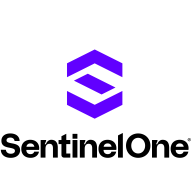


Prisma Cloud and Sysdig Secure are both leaders in the cloud security solutions category. Prisma Cloud appears to have the upper hand in integration and comprehensive coverage for multi-cloud environments, while Sysdig Secure excels in Kubernetes integration and runtime security.
Features: Prisma Cloud provides dynamic workload identity creation, comprehensive compliance features, and integrates well with AWS. Its tools offer a single pane of glass for security posture management. Automated forensics and runtime security add to its appeal. Sysdig Secure's strengths lie in deep Kubernetes integration and its open-source tool, Falco, for runtime security and real-time intrusion detection.
Room for Improvement: Prisma Cloud could benefit from more transparent licensing, improved UI, and enhanced support for additional cloud environments. Users also desire better API security and integration of acquired technologies. Sysdig Secure users wish for better reporting and dashboards, expanded capabilities in Kubernetes environments, and database monitoring.
Ease of Deployment and Customer Service: Prisma Cloud is flexible across various cloud environments but requires a deep understanding for deployment; its customer service receives mixed reviews with some finding it inconsistent. Sysdig Secure offers easy deployment for Kubernetes environments, and its customer service is generally praised for being proactive and helpful.
Pricing and ROI: Prisma Cloud is seen as expensive, justified by its comprehensive coverage, but there is a call for clearer pricing guidance. Its consumption-based model might increase costs with expanded use. Sysdig Secure is competitively priced, offering good value, especially for Kubernetes-focused capabilities. Both solutions enhance security and operational efficiencies, though precise savings are hard to quantify.



SentinelOne Singularity Cloud Security protects cloud workloads, offering advanced threat detection and automated response. It integrates seamlessly with cloud environments and secures containerized applications and virtual machines against vulnerabilities.
SentinelOne Singularity Cloud Security is renowned for its efficiency in mitigating threats in real-time. The platform integrates effortlessly with existing cloud environments, ensuring robust cloud security management with minimal manual intervention. Securing containerized applications and virtual machines, it excels in threat intelligence and endpoint protection. However, improvements are needed in performance during high workload periods, and more integrations with third-party tools and better documentation would be beneficial. Users often find the installation process complex, support response times slow, and the dashboard's navigation unintuitive.
What are the key features of SentinelOne Singularity Cloud Security?In specific industries, SentinelOne Singularity Cloud Security is implemented to safeguard critical data and infrastructure. Organizations in finance, healthcare, and technology depend on its real-time threat detection and automated response to protect sensitive information. Its ability to secure containerized applications and virtual machines is particularly valuable in dynamic environments where rapid scaling is necessary.
Prisma Cloud by Palo Alto Networks delivers comprehensive security for cloud environments, focusing on workload protection, identity creation, and seamless AWS integration. Its cloud visibility and control, combined with thorough vulnerability scanning, help maintain robust security across multi-cloud platforms.
Prisma Cloud provides essential capabilities for cloud security posture management, container security, and compliance monitoring. Enterprises utilize it to secure cloud configurations, detect vulnerabilities, and ensure regulatory compliance, spanning AWS, Azure, and Google Cloud. Its runtime management, identity-based micro-segmentation, and threat detection enhance cybersecurity. Despite needing improvements in documentation, integration complexities, UI, and the need for role-based access control refinement, it remains pivotal for securing assets across cloud infrastructures, particularly with its capabilities for vulnerability scanning and CI/CD pipeline integration.
What are the key features?
What benefits or ROI should users expect?
In industries like finance, healthcare, and retail, Prisma Cloud is implemented to strengthen cybersecurity measures, facilitate regulatory compliance, and enhance governance. Organizations leverage its features to secure sensitive data, monitor configurations, and integrate security processes within CI/CD workflows, ensuring robust protection across complex cloud infrastructures.
In the cloud, every second counts. Attacks move at warp speed, and security teams must protect the business without slowing it down. Sysdig stops cloud attacks in real time, instantly detecting changes in risk with runtime insights, a unique AI architecture, and open source Falco. Sysdig delivers live visibility by correlating signals across cloud workloads, identities, and services to uncover hidden attack paths. By knowing what is running, teams can prioritize the vulnerabilities, misconfigurations, permissions, and threats that matter most. From prevention to defense, Sysdig helps enterprises move faster and focus on what matters: innovation.
Sysdig. Secure Every Second.
We monitor all Cloud-Native Application Protection Platforms (CNAPP) reviews to prevent fraudulent reviews and keep review quality high. We do not post reviews by company employees or direct competitors. We validate each review for authenticity via cross-reference with LinkedIn, and personal follow-up with the reviewer when necessary.